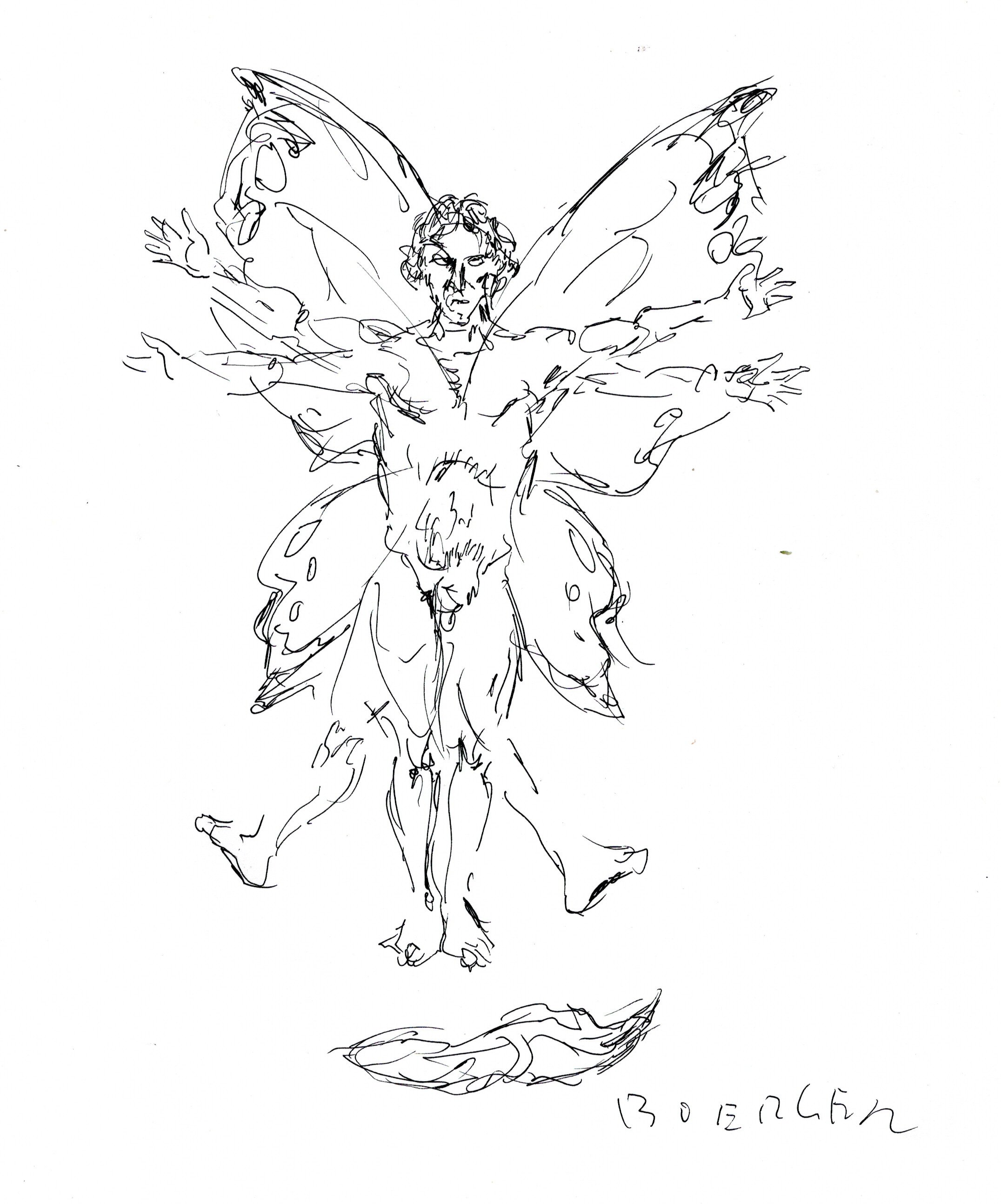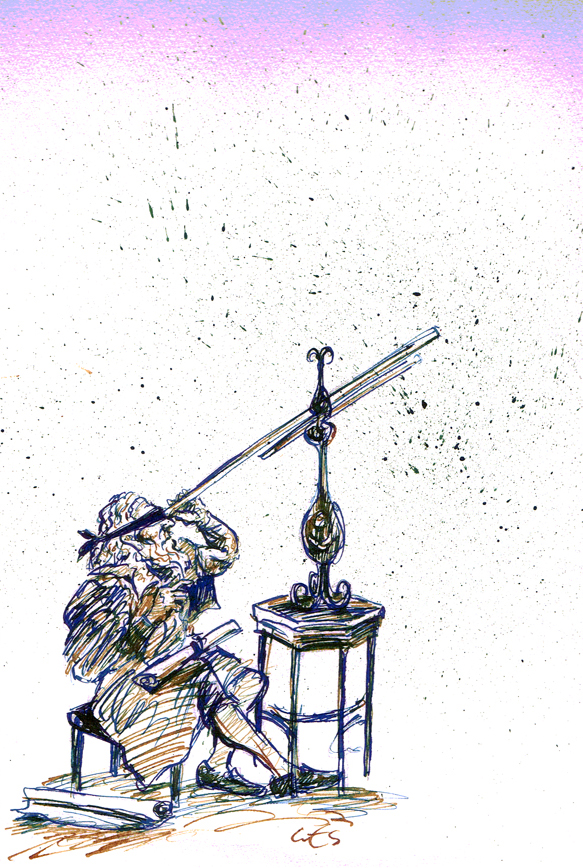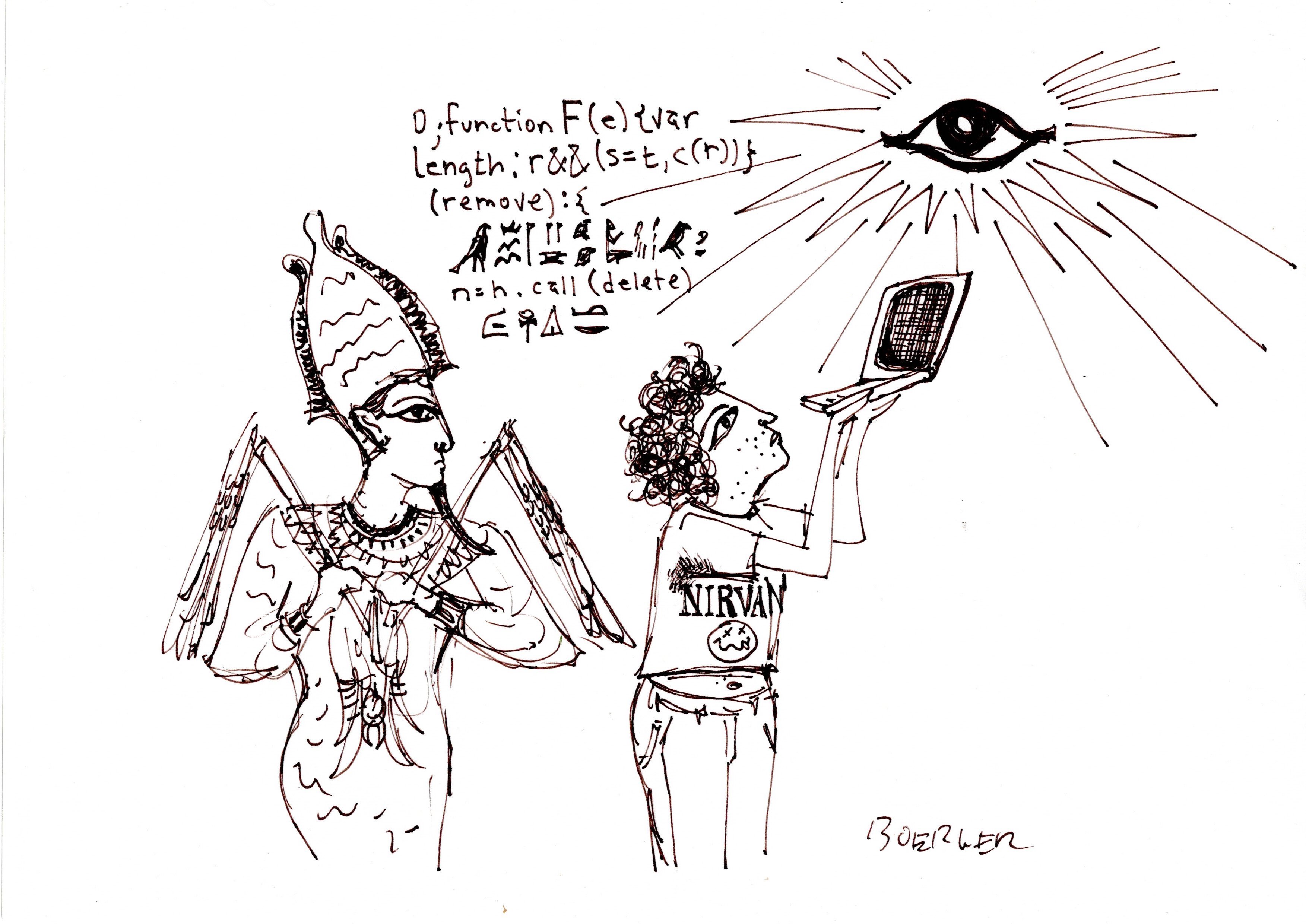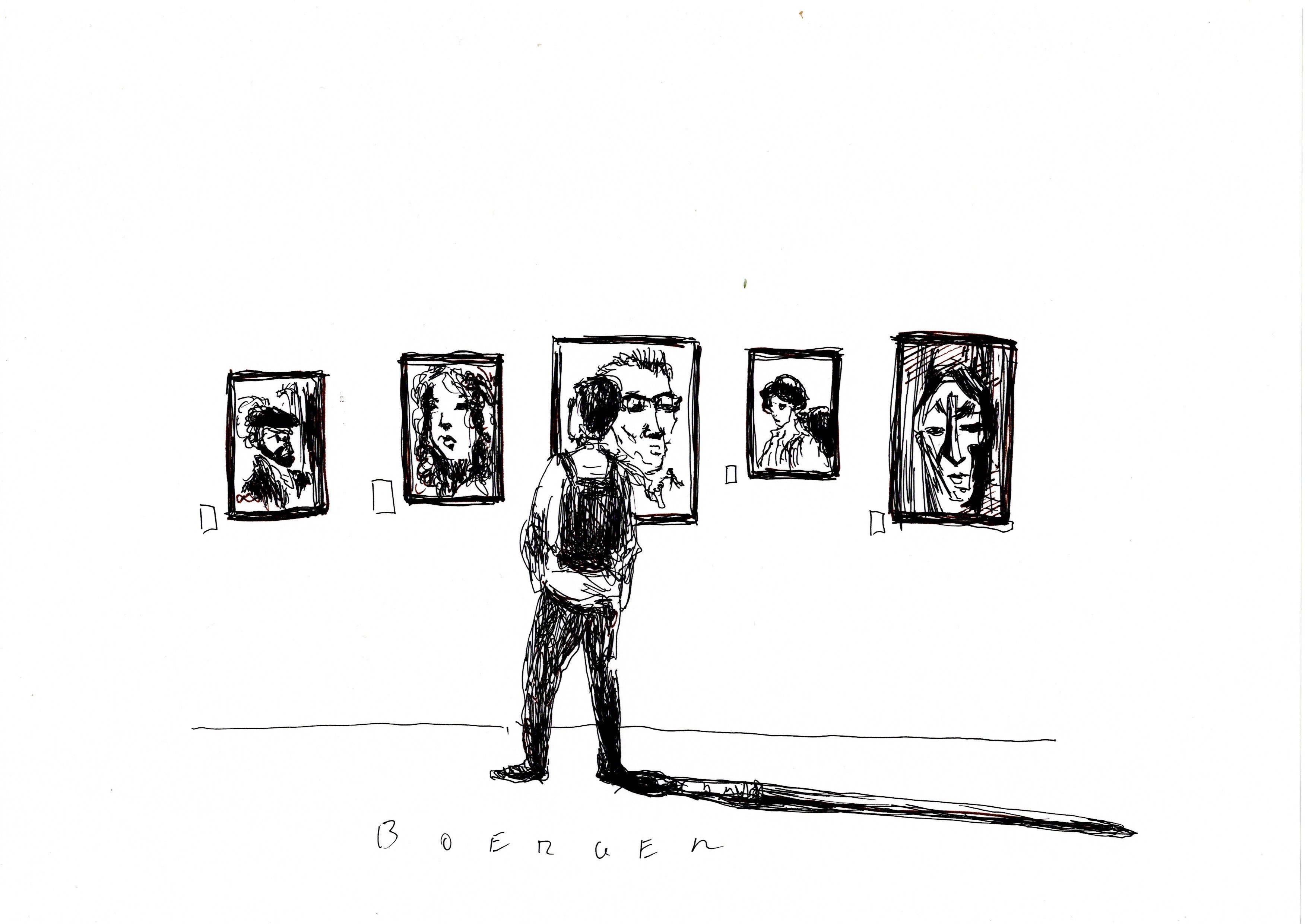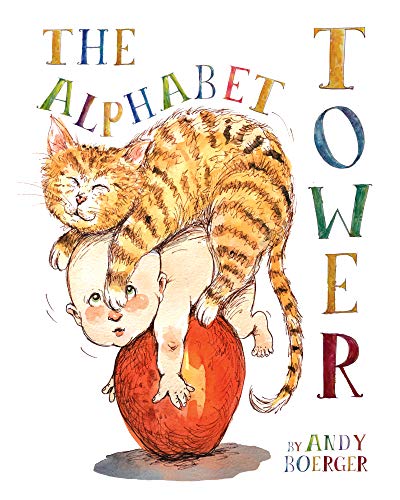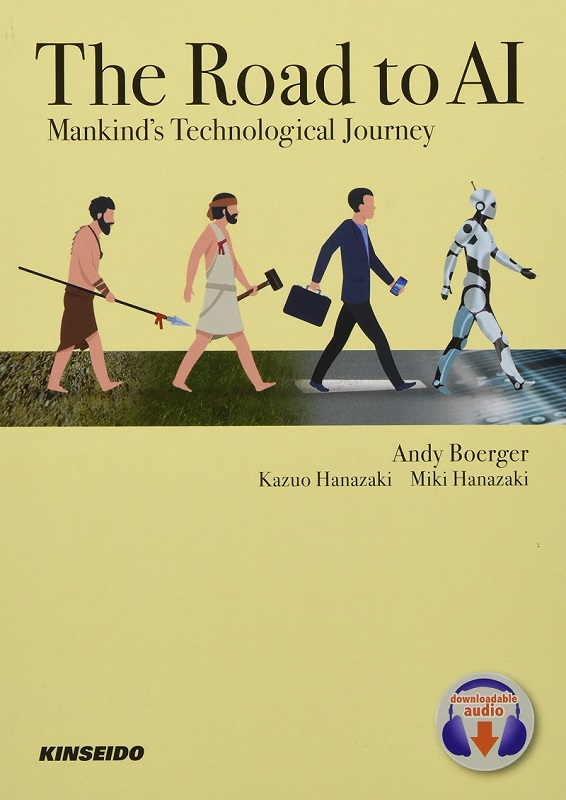2025.09.09
PET ART作品の画像をリニューアルしました!
PET ARTのアンディ・バーガーによる作品を大幅にリニューアルしましたのでお楽しみください!
"PET ART"のページの"PET ARTを見る"からフルカラー、カラー、モノクロなどの
新しい作品をご覧いただけます。
*今年9月~12月のイベントは、
・JOKER浦和店、JOKER三越本店
WANCOTT横浜
田園調布、軽井沢などで開催予定です。
"PET ART"のページの"PET ARTを見る"からフルカラー、カラー、モノクロなどの
新しい作品をご覧いただけます。
*今年9月~12月のイベントは、
・JOKER浦和店、JOKER三越本店
WANCOTT横浜
田園調布、軽井沢などで開催予定です。
2024.09.27
October Pet Art Event! 10/27㈰ 11:30-18:00
Cafe&Gallery Roomer is five minutes walk from Soshigaya Okura Station and is a popular place for people and dogs! I will hold a Pet Art Event there on Sunday, October 27th. I will be there all day drawing peoples’ pets and enjoying delicious coffee and food. Please come! You can bring your pet or photos of your pet if you want me to create a creative work of art that you can keep forever. Please note that this time only A5 black&white is available.
2024.07.31
Summer Pet Art Event! 8/18
Deco’s Dog Cafe is right next to Den en Chofu Station and is a popular place for people and dogs! I will hold a Pet Art Event there on Sunday, October 1st. I will be there all day drawing peoples’ pets and enjoying delicious coffee and food. Please come! You can bring your pet or photos of your pet if you want me to create a creative work of art that you can keep forever.
2024.01.10
Website Renewal !
Deco’s Dog Cafe is right next to Den en Chofu Station and is a popular place for people and dogs! I will hold a Pet Art Event there on Sunday, October 1st. I will be there all day drawing peoples’ pets and enjoying delicious coffee and food. Please come! You can bring your pet or photos of your pet if you want me to create a creative work of art that you can keep forever.
2023.11.27
New Pet Art Event in Kaminoge(12/10)
Deco’s Dog Cafe is right next to Den en Chofu Station and is a popular place for people and dogs! I will hold a Pet Art Event there on Sunday, October 1st. I will be there all day drawing peoples’ pets and enjoying delicious coffee and food. Please come! You can bring your pet or photos of your pet if you want me to create a creative work of art that you can keep forever.
2023.11.05
【UPDATE】Pet Art Exhibition and Event(11/23) in November!
Deco’s Dog Cafe is right next to Den en Chofu Station and is a popular place for people and dogs! I will hold a Pet Art Event there on Sunday, October 1st. I will be there all day drawing peoples’ pets and enjoying delicious coffee and food. Please come! You can bring your pet or photos of your pet if you want me to create a creative work of art that you can keep forever.
2023.10.10
Pet Art Exhibition and Events in November! 11/4th 23rd
Deco’s Dog Cafe is right next to Den en Chofu Station and is a popular place for people and dogs! I will hold a Pet Art Event there on Sunday, October 1st. I will be there all day drawing peoples’ pets and enjoying delicious coffee and food. Please come! You can bring your pet or photos of your pet if you want me to create a creative work of art that you can keep forever.
2023.09.28
Pet Art Event this Sunday! 10/1
Deco’s Dog Cafe is right next to Den en Chofu Station and is a popular place for people and dogs! I will hold a Pet Art Event there on Sunday, October 1st. I will be there all day drawing peoples’ pets and enjoying delicious coffee and food. Please come! You can bring your pet or photos of your pet if you want me to create a creative work of art that you can keep forever.
2023.05.19
I Made a Sign!
I made a sign to use at my exhibitions. I am planning to hold several over the coming months so it is sure to get a lot of use :) !
2023.02.04
Excerpts from lectures I gave at Kansai University in January
these two clips are from two lectures I recently gave at Kansai University in Osaka on the themes 'Essential RhetoricalDevices for Englsih Presentations' and 'Presenting about Sustainability.
https://www.youtube.com/watch?v=SAmtjNlXFbc
https://www.youtube.com/watch?v=SAmtjNlXFbc
https://www.youtube.com/watch?v=SAmtjNlXFbc
https://www.youtube.com/watch?v=SAmtjNlXFbc
2022.04.25
Missing the Jackpot
"And she'll have fun, fun, fun till her daddy takes the T-Bird away!"
- The Beach Boys
Imagine a product that, if they could afford it, nearly everyone would want to own. Imagine it being so expensive that any company that made it, so long as it managed to cater to the desires of potential customers, would become one of the biggest companies in the world. Imagine that this new product would be of a type such that, to be viable, a slew of new industries and services would have to be invented to support it. Imagine that, as well, some former industries that existed long before this new product was even thought of would become transformed and revolutionized as they fitted their production capacities toward this new product, growing huge themselves alongside it. Imagine that the very environment we humans inhabit would change dramatically, by necessity, as this new product made old notions of communities, towns, cities, even the very notions of "near" and "far" obsolete. Furthermore, imagine that the people who manufactured this product, and worked in all the other industries that serve it, were paid so well that they could afford to satisfy their desires for other products, and that these products also then grew into enormous industries of their own. I think you can easily imagine that this product would have a profound influence on the world's economy. I think it is fair to say that were such a product to arise, within a few short years the bleak economic forecasts of financial meltdown and worldwide economic malaise would be briskly whisked away. I also think you would agree that such a product coming about now, when the world needs it most, is unlikely at best.
The problem, of course, is that such a product did come about, once. However, that happened around 100 years ago. The automobile represents what I call a "Jackpot Industry". With it, the world economy hit the jackpot. Around it grew the oil industry, the steel industry, the rubber industry, the glass industry, etc. The workers at the factories where all of these were produced were able to buy televisions, radios, stereos, etc. It grew cities such as Detroit, Pittsburgh, Akron, Nagoya and Hiroshima. It took two countries, the U.S. and Japan, as well as the already mature economies of Western Europe, to economic heights never seen before, and brought about a new system: an economy not based on lords and serfs, but on a middle class with desires they could now fulfill by virtue of their paychecks.
It is staggering to think what this one product made possible. And yet, as with so many other products invented before the mid 20th century, the automobile began as a plaything, strictly for the enjoyment of the leisure class. It was therefore the vision of Henry Ford - that the very workers who produced it would themselves be able to afford one - that brought this machine among machines into its own. But once that genie was released from its lamp, the world's economy was set on a course of expansion never before seen. And the world changed. Very old industries, such as metal smelting and glassworks, as well as newer industries such as oil, rubber and cement, grew to heights undreamed of as they fitted their technology to serve the demand for automobiles and the roads and bridges to drive them on. Buildings reached new, literal, heights, as working spaces for people traveling great distances to their offices - made possible by cars and highways - resulted in the need for skyscrapers, creating our modern image of what cities look like. Homes filled with consumer goods, supermarkets, fast food restaurants, shopping malls, etc; not to mention freeways and suburbia - none of these things existed before automobiles became a commonplace item, nor could they have.
Tragically, the effects of the automobile industry are as much a litany of global woes as a story of new possibilities. The devastation to the environment wrought by the automobile and its ancillary industries represents a threat to the planet that we are slowly beginning to recognize as existential. What we are also learning is the benefits may be far more ephemeral than we imagined. Whereas most Americans growing up in the Age of the Automobile may have easily deluded themselves that the country's vibrant middle class was the true economic bedrock upon which the nation depended, we have woken up to discover that, to the executives in their gleaming Midtown towers, the middle class was simply a moveable feast. They milked it dry in the U.S., and then began building it up, in Japan, Korea, etc.; with eyes on an even bigger prize: if China and India, which together comprise nearly a third of the world's population, should manage to evolve into western-style consumer cultures, the American middle class can ever after be treated as an afterthought. Which, considering the outsourcing frenzy of corporate America, appears to already be the case.
But even that scenario will not come about as planned, to the chagrin of ruthless executives. The Jackpot Days are over. Supplying India and China with cars for every available driver simply doesn't work. Our environment is already severely wounded, and we are reduced to tearing up mountains and gouging holes into the ocean to squeeze out the last bit of oil that cars need to run on, with ever more disastrous environmental consequences. Electric and hybrid cars won't do the trick. Certainly, making cars that run more efficiently and pollute less should be the top priority of all car companies. But their products still have to be manufactured and shipped. That means tons of steel, plastic, fiberglass, rubber, and all the energy required to produce them. The most recent super freighters, fully loaded, are perhaps the largest and heaviest things ever built by man, and eco-friendly cars will do nothing to unclog shipping lanes.
Likewise, there is no new Jackpot Industry to do for the world economy what the Model T began doing eighty years ago. The internet, mobile phones, ecological and medical technologies, etc., simply do not have the ancillary industrial backing to turn the world's economic downturn around. Some may champion the notion of home robots as a linchpin industry, as the populations of developed countries age and need caring for. This could (and well may) lead to extraordinarily lucrative technological breakthroughs, but cannot possibly create the kind of ripple effects that were the key to the success of the Age of the Automobile. In fact, nothing can. This limited planet cannot withstand another era of unrestrained industrial growth.
That Age is over. Period. The economic protests that are erupting all over the world right now are an entirely predictable consequence of the point we have reached, and a clarion call that bears heeding. Nothing, within our current framework of thinking about economics, commerce, or manufacturing, is going to get us out of the mess we are now in. The benefits of the automobile industry are now in our rearview mirror, and fading fast. We must begin creating deeper and further reaching, non-economic solutions to the numerous problems our world faces.
- The Beach Boys
Imagine a product that, if they could afford it, nearly everyone would want to own. Imagine it being so expensive that any company that made it, so long as it managed to cater to the desires of potential customers, would become one of the biggest companies in the world. Imagine that this new product would be of a type such that, to be viable, a slew of new industries and services would have to be invented to support it. Imagine that, as well, some former industries that existed long before this new product was even thought of would become transformed and revolutionized as they fitted their production capacities toward this new product, growing huge themselves alongside it. Imagine that the very environment we humans inhabit would change dramatically, by necessity, as this new product made old notions of communities, towns, cities, even the very notions of "near" and "far" obsolete. Furthermore, imagine that the people who manufactured this product, and worked in all the other industries that serve it, were paid so well that they could afford to satisfy their desires for other products, and that these products also then grew into enormous industries of their own. I think you can easily imagine that this product would have a profound influence on the world's economy. I think it is fair to say that were such a product to arise, within a few short years the bleak economic forecasts of financial meltdown and worldwide economic malaise would be briskly whisked away. I also think you would agree that such a product coming about now, when the world needs it most, is unlikely at best.
The problem, of course, is that such a product did come about, once. However, that happened around 100 years ago. The automobile represents what I call a "Jackpot Industry". With it, the world economy hit the jackpot. Around it grew the oil industry, the steel industry, the rubber industry, the glass industry, etc. The workers at the factories where all of these were produced were able to buy televisions, radios, stereos, etc. It grew cities such as Detroit, Pittsburgh, Akron, Nagoya and Hiroshima. It took two countries, the U.S. and Japan, as well as the already mature economies of Western Europe, to economic heights never seen before, and brought about a new system: an economy not based on lords and serfs, but on a middle class with desires they could now fulfill by virtue of their paychecks.
It is staggering to think what this one product made possible. And yet, as with so many other products invented before the mid 20th century, the automobile began as a plaything, strictly for the enjoyment of the leisure class. It was therefore the vision of Henry Ford - that the very workers who produced it would themselves be able to afford one - that brought this machine among machines into its own. But once that genie was released from its lamp, the world's economy was set on a course of expansion never before seen. And the world changed. Very old industries, such as metal smelting and glassworks, as well as newer industries such as oil, rubber and cement, grew to heights undreamed of as they fitted their technology to serve the demand for automobiles and the roads and bridges to drive them on. Buildings reached new, literal, heights, as working spaces for people traveling great distances to their offices - made possible by cars and highways - resulted in the need for skyscrapers, creating our modern image of what cities look like. Homes filled with consumer goods, supermarkets, fast food restaurants, shopping malls, etc; not to mention freeways and suburbia - none of these things existed before automobiles became a commonplace item, nor could they have.
Tragically, the effects of the automobile industry are as much a litany of global woes as a story of new possibilities. The devastation to the environment wrought by the automobile and its ancillary industries represents a threat to the planet that we are slowly beginning to recognize as existential. What we are also learning is the benefits may be far more ephemeral than we imagined. Whereas most Americans growing up in the Age of the Automobile may have easily deluded themselves that the country's vibrant middle class was the true economic bedrock upon which the nation depended, we have woken up to discover that, to the executives in their gleaming Midtown towers, the middle class was simply a moveable feast. They milked it dry in the U.S., and then began building it up, in Japan, Korea, etc.; with eyes on an even bigger prize: if China and India, which together comprise nearly a third of the world's population, should manage to evolve into western-style consumer cultures, the American middle class can ever after be treated as an afterthought. Which, considering the outsourcing frenzy of corporate America, appears to already be the case.
But even that scenario will not come about as planned, to the chagrin of ruthless executives. The Jackpot Days are over. Supplying India and China with cars for every available driver simply doesn't work. Our environment is already severely wounded, and we are reduced to tearing up mountains and gouging holes into the ocean to squeeze out the last bit of oil that cars need to run on, with ever more disastrous environmental consequences. Electric and hybrid cars won't do the trick. Certainly, making cars that run more efficiently and pollute less should be the top priority of all car companies. But their products still have to be manufactured and shipped. That means tons of steel, plastic, fiberglass, rubber, and all the energy required to produce them. The most recent super freighters, fully loaded, are perhaps the largest and heaviest things ever built by man, and eco-friendly cars will do nothing to unclog shipping lanes.
Likewise, there is no new Jackpot Industry to do for the world economy what the Model T began doing eighty years ago. The internet, mobile phones, ecological and medical technologies, etc., simply do not have the ancillary industrial backing to turn the world's economic downturn around. Some may champion the notion of home robots as a linchpin industry, as the populations of developed countries age and need caring for. This could (and well may) lead to extraordinarily lucrative technological breakthroughs, but cannot possibly create the kind of ripple effects that were the key to the success of the Age of the Automobile. In fact, nothing can. This limited planet cannot withstand another era of unrestrained industrial growth.
That Age is over. Period. The economic protests that are erupting all over the world right now are an entirely predictable consequence of the point we have reached, and a clarion call that bears heeding. Nothing, within our current framework of thinking about economics, commerce, or manufacturing, is going to get us out of the mess we are now in. The benefits of the automobile industry are now in our rearview mirror, and fading fast. We must begin creating deeper and further reaching, non-economic solutions to the numerous problems our world faces.
2022.04.08
The Garden
This is a fable about Life I wrote and created images for. With the collaboration of director Rachel Walzer, narrator David Mashiko and musical artist Karen Pauley, it came together. I hope you'll enjoy it!
2022.03.29
Do Platypuses Dream of Eccentric Sheep?
Sleep; who needs it? And who doesn't? Isaac Asimov called it a waste of time, whereas John Lennon wrote one of his most mesmerizing songs in praise of it. My personal alliances are with Mr. Lennon, a warm bed to collapse into at night being one of life's little pleasures for me. On the other hand, some people I know sleep as little as they can get away with, either due to personal preference ( a la Mr. Asimov) or the demands of their jobs. Adult humans might spend anywhere from a third to a mere sixth of their lives in dreamland. But what about our fellow mammals? Who are the Asimovs of the animal world, and who are the (to me, far more sensible) Lennons?
Giraffes - These are critters after Mr. Asimov's own heart. Not only do they look like inhabitants of one of his more unusual worlds, they sleep less than the great man himself! In fact, they sleep less than anybody. They are the true Night Owls of the animal kingdom. They burn the midnight oil, are up with the roosters, catch the worm, etc. etc.; there's not a cliche about sleeplessness these guys don't have covered. For they get by on a mere ninety minutes of sleep per 24 hour period. And even that isn't all at once. Because these giant creatures are such an obvious target, they have to be on the lookout for predators almost continuously. So, the same evolutionary process that endowed them with those crane-like necks also rigged it so that their sleep needs are met by little naps of between five and twenty minutes or so. The next time you're on a safari, consider that the giraffe who's picture you snap might be the reincarnation of some workaholic ancestor of yours who thought that sleep was for wimps.
Elephants never forget, and they rarely sleep. What keeps the largest and strongest land animal on earth up at night, I can't imagine, but sleepless nights are the norm for pachyderms. Sleepless days, too. Rivaling the giraffe in terms of how little shuteye they require, our giant friends get by on around two or three hours of sleep per cycle. This is roughly the same amount as horses, who, like giraffes and elephants, sleep standing up. Rhinos get by on just a few hours too. They can nap standing up, but for their deep sleep periods they lie down.
How much sleep do our closest relatives (chimps, gorillas, orangutans) get a night, compared to our average of eight hours? Well, if you, like me, find sleep to be one of life's treats, then you may think you've ended up on the wrong branch of the Tree of Life. Our genetic cousins generally get between twelve and thirteen hours of quality time with the sandman. Which makes one wonder, if it's good enough for these guys, with whom we differ in less than ten percent of our DNA makeup, why isn't it good enough for us, and are we really the smartest apes?
Hippos are hard to pin down. These giant mammals spend most of their lives underwater, and yet they breathe through nostrils (they are in fact said to be the closest living land animals to whales, who have evolved an entirely different breathing apparatus). They have been observed napping on land, but as for their underwater lives, how do they sleep without drowning? First, they make themselves airtight; they fold their ears over on themselves and close up their nostrils before sinking into the water. Then, while asleep, their bodies rise several times throughout a sleep period for more air. But is it a sleepwalker's sleep, or is it more like getting up and going to the bathroom? If the former, then hippos seem to get about sixteen hours of sleep, far more than their fellow, earthbound, giants, the elephants.
Lions and Tigers and Bears - Oh, my! The living is easy at the top of the food chain! Anyone with a pet cat knows that their furry friends sleep like it's a lifelong calling, and it's no different for the big fellas. Lions average around fourteen to sixteen hours, with the lucky males sleeping up to twenty. Like all big cats, the females use tremendous amounts of energy when they are called upon for a hunt and kill. The male's job is to protect the pride, which means he has less to do on the average day. He sleeps all that time because he can, basically. Same for tigers, and big cats in general. As for bears, they seem to have it even easier; they get to "sleep" a whole season! Technically, bears don't really hibernate. Their metabolism doesn't change radically from normal waking hours in comparison to true hibernators like squirrels. Scientists call what bears do "winter lethargy", which means they basically just zone out during the cold months. Not a bad deal, right? When you're a bear, you don't even have to bother with Do Not Disturb signs.
The Platypus - Looking like it decided to go to a Halloween Party dressed as Darwin's Missing Link, the platypus has puzzled and perplexed people ever since it was discovered. It seems to be going out of its way to be an oddball in nearly every respect, and sleep is no different. For one thing, playpuses are said to be the only mammal that doesn't dream, at least not as indicated by the study of dreaming. They have the deep REM sleep associated with dreams (in fact, they rank first among mammals in this regard, up to eight hours, compared to two for the average human), but not the accompanying frontal lobe activity. On the other hand, not being platypuses themselves, can scientists really say for sure whether they can dream or not? Which raises the question: if they do dream, can they possibly dream of anything more unusual than - a platypus?
It seems almost unholy, or at least not wholly appropriate, to name the Sloth after one of The Seven Deadly Sins. Though long thought to be champion sleepers (up to eighteen hours a day) a recent study led by Dr. Neil Rattenborg reveals that these slow moving critters manage a mere ten, not that much more than a human. And this on a diet of leaves so poor in nutrition that they are forced to conduct their waking activities at an exceedingly slow pace. "Lazy", indeed! They are just coping with their environment. Perhaps the true sloths are the folks who live on a diet of chips and suds when much healthier alternatives are readily available, but that might be taking us into Gluttony territory.
We come now to the Sultans of Somnolence, the champion sleepers of the mammal kingdom. I am tempted to give the award, with no further research necessary, to my own pet ferret, Rosie. Rosie not only sleeps more than ninety percent of her life, she has developed sleep into an art form. She can sleep in any position, from pretzel like contortions that make it impossible to discern how the body parts connect, to stretched out like a bear rug. She can sleep just about anywhere, including my head (I have a picture of this if you want proof)! Furthermore, she seems to never tire of finding new places around the home to sleep, which means precautions must be taken before throwing anything away. In general, though, although ferrets certainly rank in the higher echelons of sleepdom (at sixteen to eighteen hours) they don't get the blue ribbon. That honor goes to the little brown bat. These little guys get plenty of, er, "beauty" sleep (of the "eye of the beholder" type, it seems), managing a mere two to three hours of wakefulness per cycle. They have company; koalas and armadillos are animals with low metabolisms that sleep about twenty hours out of twenty four.
So there you have it. On a mammalian scale, we humans and our roughly eight hours end up pretty much smack dab in the middle. We share the world with creatures who make do on far less, and others who couldn't imagine life without at least twice as much. So if you worry that you're sleeping your life away, remember the lions and bears, kings of their realms, mostly dozing. And if you're frazzled from too few hours in bed, remember the stately giraffe, ever alert, ever watchful, going through life with eyes wide open.
Giraffes - These are critters after Mr. Asimov's own heart. Not only do they look like inhabitants of one of his more unusual worlds, they sleep less than the great man himself! In fact, they sleep less than anybody. They are the true Night Owls of the animal kingdom. They burn the midnight oil, are up with the roosters, catch the worm, etc. etc.; there's not a cliche about sleeplessness these guys don't have covered. For they get by on a mere ninety minutes of sleep per 24 hour period. And even that isn't all at once. Because these giant creatures are such an obvious target, they have to be on the lookout for predators almost continuously. So, the same evolutionary process that endowed them with those crane-like necks also rigged it so that their sleep needs are met by little naps of between five and twenty minutes or so. The next time you're on a safari, consider that the giraffe who's picture you snap might be the reincarnation of some workaholic ancestor of yours who thought that sleep was for wimps.
Elephants never forget, and they rarely sleep. What keeps the largest and strongest land animal on earth up at night, I can't imagine, but sleepless nights are the norm for pachyderms. Sleepless days, too. Rivaling the giraffe in terms of how little shuteye they require, our giant friends get by on around two or three hours of sleep per cycle. This is roughly the same amount as horses, who, like giraffes and elephants, sleep standing up. Rhinos get by on just a few hours too. They can nap standing up, but for their deep sleep periods they lie down.
How much sleep do our closest relatives (chimps, gorillas, orangutans) get a night, compared to our average of eight hours? Well, if you, like me, find sleep to be one of life's treats, then you may think you've ended up on the wrong branch of the Tree of Life. Our genetic cousins generally get between twelve and thirteen hours of quality time with the sandman. Which makes one wonder, if it's good enough for these guys, with whom we differ in less than ten percent of our DNA makeup, why isn't it good enough for us, and are we really the smartest apes?
Hippos are hard to pin down. These giant mammals spend most of their lives underwater, and yet they breathe through nostrils (they are in fact said to be the closest living land animals to whales, who have evolved an entirely different breathing apparatus). They have been observed napping on land, but as for their underwater lives, how do they sleep without drowning? First, they make themselves airtight; they fold their ears over on themselves and close up their nostrils before sinking into the water. Then, while asleep, their bodies rise several times throughout a sleep period for more air. But is it a sleepwalker's sleep, or is it more like getting up and going to the bathroom? If the former, then hippos seem to get about sixteen hours of sleep, far more than their fellow, earthbound, giants, the elephants.
Lions and Tigers and Bears - Oh, my! The living is easy at the top of the food chain! Anyone with a pet cat knows that their furry friends sleep like it's a lifelong calling, and it's no different for the big fellas. Lions average around fourteen to sixteen hours, with the lucky males sleeping up to twenty. Like all big cats, the females use tremendous amounts of energy when they are called upon for a hunt and kill. The male's job is to protect the pride, which means he has less to do on the average day. He sleeps all that time because he can, basically. Same for tigers, and big cats in general. As for bears, they seem to have it even easier; they get to "sleep" a whole season! Technically, bears don't really hibernate. Their metabolism doesn't change radically from normal waking hours in comparison to true hibernators like squirrels. Scientists call what bears do "winter lethargy", which means they basically just zone out during the cold months. Not a bad deal, right? When you're a bear, you don't even have to bother with Do Not Disturb signs.
The Platypus - Looking like it decided to go to a Halloween Party dressed as Darwin's Missing Link, the platypus has puzzled and perplexed people ever since it was discovered. It seems to be going out of its way to be an oddball in nearly every respect, and sleep is no different. For one thing, playpuses are said to be the only mammal that doesn't dream, at least not as indicated by the study of dreaming. They have the deep REM sleep associated with dreams (in fact, they rank first among mammals in this regard, up to eight hours, compared to two for the average human), but not the accompanying frontal lobe activity. On the other hand, not being platypuses themselves, can scientists really say for sure whether they can dream or not? Which raises the question: if they do dream, can they possibly dream of anything more unusual than - a platypus?
It seems almost unholy, or at least not wholly appropriate, to name the Sloth after one of The Seven Deadly Sins. Though long thought to be champion sleepers (up to eighteen hours a day) a recent study led by Dr. Neil Rattenborg reveals that these slow moving critters manage a mere ten, not that much more than a human. And this on a diet of leaves so poor in nutrition that they are forced to conduct their waking activities at an exceedingly slow pace. "Lazy", indeed! They are just coping with their environment. Perhaps the true sloths are the folks who live on a diet of chips and suds when much healthier alternatives are readily available, but that might be taking us into Gluttony territory.
We come now to the Sultans of Somnolence, the champion sleepers of the mammal kingdom. I am tempted to give the award, with no further research necessary, to my own pet ferret, Rosie. Rosie not only sleeps more than ninety percent of her life, she has developed sleep into an art form. She can sleep in any position, from pretzel like contortions that make it impossible to discern how the body parts connect, to stretched out like a bear rug. She can sleep just about anywhere, including my head (I have a picture of this if you want proof)! Furthermore, she seems to never tire of finding new places around the home to sleep, which means precautions must be taken before throwing anything away. In general, though, although ferrets certainly rank in the higher echelons of sleepdom (at sixteen to eighteen hours) they don't get the blue ribbon. That honor goes to the little brown bat. These little guys get plenty of, er, "beauty" sleep (of the "eye of the beholder" type, it seems), managing a mere two to three hours of wakefulness per cycle. They have company; koalas and armadillos are animals with low metabolisms that sleep about twenty hours out of twenty four.
So there you have it. On a mammalian scale, we humans and our roughly eight hours end up pretty much smack dab in the middle. We share the world with creatures who make do on far less, and others who couldn't imagine life without at least twice as much. So if you worry that you're sleeping your life away, remember the lions and bears, kings of their realms, mostly dozing. And if you're frazzled from too few hours in bed, remember the stately giraffe, ever alert, ever watchful, going through life with eyes wide open.

